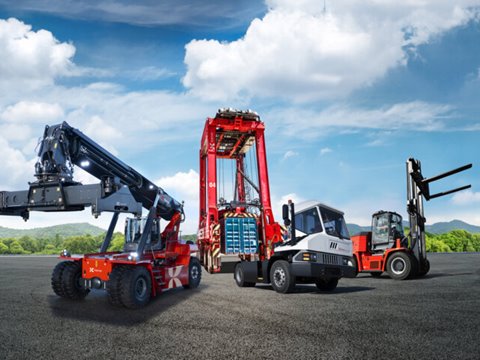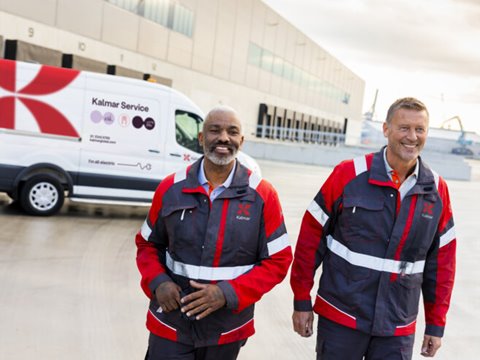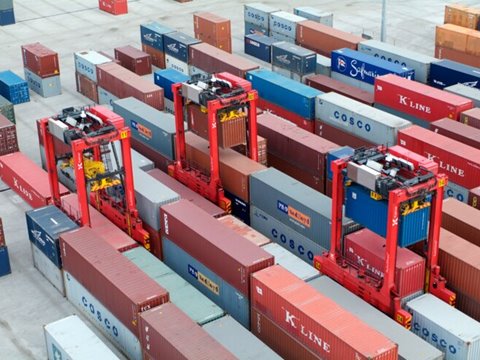
Myth #5: Electric straddle carrier batteries: larger batteries are better
In the final part of this series, we address one of the most widespread misconceptions about electric straddle carriers. This is the idea that the battery capacity on a straddle carrier should be as high as possible – the bigger the better. Right?
"The reality is that beyond a certain point, there is really no added value from increasing the battery capacity on a straddle," says Mikko Nurmela, Senior Development Manager, Kalmar. "The battery needs to be large enough to support the intended operation and charging solution, but not too big either. An oversized battery will not only add unnecessary costs, but also will be physically larger and heavier, thus actually decreasing the energy efficiency of the machine."
Nurmela points out that the most important thing that terminal operators need to consider when electrifying their straddle carrier fleets is that the charging of the machines needs to be designed into the operation. This calls for a definite change in approach.
"It seems that many terminals are still thinking in terms of the old diesel-powered model of refuelling the machines every other day, and then letting them run for a full shift," Nurmela says. "As we've already discussed with many of the other myths around electrification, battery-powered machines require a slightly different way of working, but with intelligent charging management, the overall effect on the operation will be negligible."
The reality is that beyond a certain point, there is really no added value from increasing the battery capacity on a straddle
A different mindset
When considering the shift to battery-powered container handling equipment, a close comparison can be made with the ongoing electrification of passenger cars. Despite initial concerns about the maximum range of electric vehicles, practical experience has shown them to be completely workable in everyday use, even for longer trips.
"We saw exactly the same discussion with EVs a few years ago," notes Verneri Koiranen, Business Development Specialist Horizontal Transportation, Kalmar. "An all-electric vehicle doesn't have the maximum range of a traditional car with a full tank of gas, but realistically speaking, if you are going on a 1,000 km road trip, how likely is it that you will have to drive it in one go? There will always be breaks that can be utilised to charge the car."
"Knowing your application is the key," adds Mikko Nurmela. "The idea of needing to charge your machines during the shift can feel intimidating at first, but the analogy with electric cars works great. Once you know what you need to do and schedule accordingly, it's really not an issue in practice. So, it's not necessary to scale your battery capacity for some theoretical maximum that realistically you will never need."
Just right is enough
To summarize, efficient and well-planned charging strategies are critical for terminals electrifying their straddle carrier fleets. Battery capacity needs to be sufficient for the expected operational model and workload of the machines, but there is no need for extra-large batteries if the operation is planned properly.
"In practice, we have seen that as soon as they have tested battery-powered machines, terminals do find that they have no problems in transitioning to all-electric operation," says Verneri Koiranen. "Moreover, our customers report that their drivers are actually vying for the chance to drive the new machines on their work shifts, as they are so much more comfortable and quiet."
In practice, we have seen that as soon as they have tested battery-powered machines, terminals do find that they have no problems in transitioning to all-electric operation
This concludes our series on the five myths of electrifying straddle carriers. For one more take on the topic, see also our previous article Myth #3 of automated straddle carriers: Automated straddle carrier operations can't be electrified.
Related articles
Further reading
Subscribe and receive updates in your email
Assine nossas publicações

